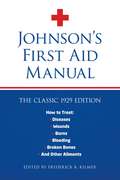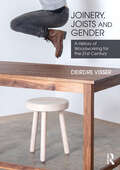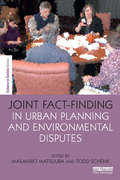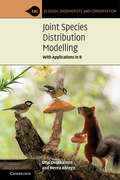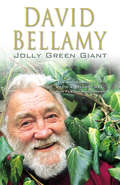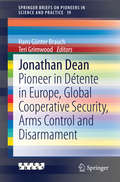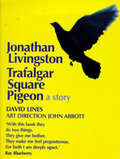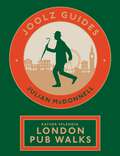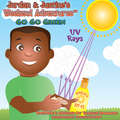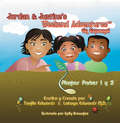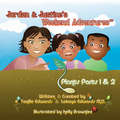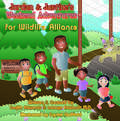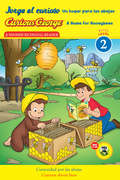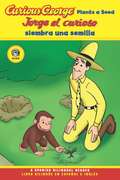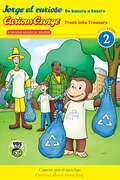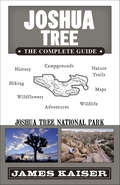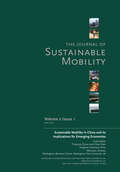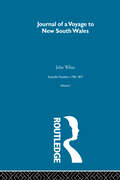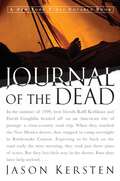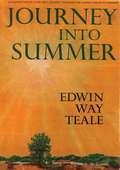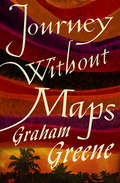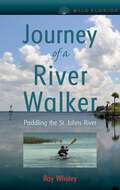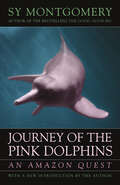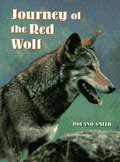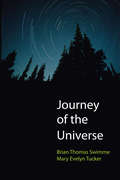- Table View
- List View
Johnson's First Aid Manual
by Frederick KilmerThe classic 1929 guide to first aid by a household name in America.
Joinery, Joists and Gender: A History of Woodworking for the 21st Century
by Deirdre VisserJoinery, Joists and Gender: A History of Woodworking for the 21st Century is the first publication of its kind to survey the long and rich histories of women and gender non-conforming persons who work in wood. Written for craft practitioners, design students, and readers interested in the intersections of gender and labor history—with 200 full-color images, both historical and contemporary—this book provides an accessible and insightful entry into the histories, practices, and lived experiences of women and nonbinary makers in woodworking. In the first half the author presents a woodworking history primarily in Europe and the United States that highlights the practical and philosophical issues that have marked women’s participation in the field. Research focuses on a diverse range of practitioners from Lady Yun to Adina White. This is followed by sixteen in-depth profiles of contemporary woodworkers, all of whom identify fine woodworking as their principal vocation. Through studio visits, interviews, and photographs of space and process, the book uncovers the varied practices and contributions these diverse artisans make to the understanding of wood as a medium to engage spatial, material, aesthetic, and even existential challenges. Beautifully illustrated profiles include Wendy Maruyama, one of the first women to earn an MFA in woodworking in the US; Sarah Marriage, founder of Baltimore’s A Workshop of Our Own, a woodshop and educational space specifically for women and gender non-conforming makers; Yuri Kobayashi, whose sublime work blurs boundaries between the worlds of art and craft, sculpture, and furniture; and Folayemi Wilson, whose work draws equally on African American history and Afrofuturism to explore and illuminate the ways that furniture and wood traditions shape social relations.
Joint Fact-Finding in Urban Planning and Environmental Disputes (The Earthscan Science in Society Series)
by Masahiro Matsuura and Todd SchenkThe days of rationalist scientific management and deference to official data are behind us. The credibility of experts and the information they provide are regularly challenged; officials are routinely provided with conflicting sets of facts as they plan and make decisions; and decision makers and stakeholders alike are largely skeptical that technical information will adequately account for the various interests and concerns and lead to the right outcomes. They struggle to reconcile technical information with other forms of knowledge, and differing interests, priorities and perspectives. Issues like climate change are complicating matters even further, as scientists and technicians must increasingly acknowledge the uncertainty and potential fallibility of their findings, and highlight the dynamic nature of the systems they are explaining. This book examines how groups looking to plan and make decisions in any number of areas can wade through the imperfect and often contradictory information they have to make fair, efficient, wise and well-informed choices. It introduces an emerging and very promising approach called joint fact-finding (JFF). Rather than each stakeholder group marshaling the set of facts that best advance their respective interests and perspectives while discrediting the contradictory facts others provide, groups are challenged to collaboratively generate shared sets of facts that all parties accept. This book introduces readers to the theory of JFF, the value it can provide, and how they can adopt this approach in practice. It brings together writings from leading practitioners and scholars from around the world that are at the forefront of the JFF approach to science intensive policymaking, urban planning, and environmental dispute resolution. The first set of chapters outlines the concept of JFF, and situates it within other bodies of theory and practice. The second set of case-based chapters elucidates how JFF is being applied in practice. This book delivers a new perspective to scholars in the field of public policy, urban planning, environmental studies, and science and technology studies, as well as public officials, technical experts, policy consultants, and professional facilitators.
Joint Species Distribution Modelling: With Applications in R (Ecology, Biodiversity and Conservation)
by Otso Ovaskainen Nerea AbregoJoint species distribution modelling (JSDM) is a fast-developing field and promises to revolutionise how data on ecological communities are analysed and interpreted. Written for both readers with a limited statistical background, and those with statistical expertise, this book provides a comprehensive account of JSDM. It enables readers to integrate data on species abundances, environmental covariates, species traits, phylogenetic relationships, and the spatio-temporal context in which the data have been acquired. Step-by-step coverage of the full technical detail of statistical methods is provided, as well as advice on interpreting results of statistical analyses in the broader context of modern community ecology theory. With the advantage of numerous example R-scripts, this is an ideal guide to help graduate students and researchers learn how to conduct and interpret statistical analyses in practice with the R-package Hmsc, providing a fast starting point for applying joint species distribution modelling to their own data.
Jolly Green Giant
by David BellamyDavid Bellamy is a natural story teller whose memoir will be packed full of funny anecdotes and observations. It is the story of how a city boy, brought up in the middle of London, went for a trip into the countryside one day, an event which was to transform his life by setting in motion the amazing love of nature which would make famous this larger-than-life character. In his infectious style he illumines on, amongst other things, the fact that his father, the manager of a branch of Boots, had to grease his hair straight - because in those days managers of Boots weren't allowed to have curly hair! Then there was the time he and his brother discovered an exploded bomb, kept in the garden shed - and then accidentally blew off the front of the house with it. He reveals his secret passion is ballet dancing - and how his mother only found out about it when she saw him on stage at the Fairfield Hall in Croydon. His career as an academic, then author, broadcaster, consultant and television personality, spans 35 years and his main passion - campaigning for the environment - have led to many adventures including his being twice imprisoned in the Third World.
Jonathan Dean
by Hans Günter Brauch Teri GrimwoodJonathan Dean (1924-2014) was a distinguished U. S. diplomat (1950-1980) and from 1984 to 2007 global security adviser to the Union of Concerned Scientists, Washington, D. C. During the 1980s and 1990s he was a pioneering conceptual thinker, writer and speaker on détente in Europe, global cooperative security, arms control and disarmament. He authored: Watershed in Europe (1987), Meeting Gorbachev's Challenge (1989) and Ending Europe's Wars (1994). This volume contains his biography and bibliography, six texts on détente and arms control in Europe in the 1980s: Beyond First Use; MBFR; Alternative Defence; Berlin; A Crisis Management Center; Conventional Arms Control in Europe and six texts on the new security order in Europe since the 1990s: Components of a Post-Cold War Security System for Europe; Constraining Technological Weapons Innovation; NATO Enlargement: Act II; Ten Years after the Wall; Future Security in Space; Rethinking Security: Return to the Grotean Pattern.
Jonathan Livingston Trafalgar Square Pigeon
by David LinesContinuing the tradition of parodying all things sacred, the author of The XXXX Files and PMT takes up the reigns of satire by rewriting the essential 1970s hippy handbook Jonathan Livingston Seagull. Instead of a seagull for a hero, this updated classic features a bloated, cynical, grungy pigeon, who looks not to the skies for inspiration, but to the London Underground. Cutting corners wherever possible and living the life of a fully fledged MTV-generation feral pigeon, Jonathan's rite of passage is more a celebration of modern-day teenage apathy set against a backdrop of 90s Pop Culture and Victorian underground architecture than a voyage of delicious self-discovery. Matching the original page-for-page in content and layout, Jonathan Livingston Trafalgar Square Pigeon is a modern-day morality tale that will, by its very nature, attract plenty of attention whilst ever so gently ruffling a few feathers along the way.
Joolz Guides: A Charming Trundle through London's Neighbourhoods via Its Fabulous Drinking Houses
by Julian McDonnellPip pip and Tally-Ho… Joolz is back! Joolz ends every YouTube tour with a pint in a pub, so who better to walk us around the must-visit watering holes and drinking dens of the capital than our trusty resident tour guide? Presenting 18 walks around popular and lesser-known parts of the metropolis, Rather Splendid London Pub Walks takes us on a leisurely weekend meander in search of a drink and a story. Each walk starts in a famous local, taking the scenic route from there to other popular pubs in the area. Whether it’s a wander around Wapping or the regal environs of Greenwich, along the Thames from leafy Chiswick, visiting the old gin palaces of Bloomsbury and Fitzrovia or historic boozers in Mayfair and Westminster, London is packed with gorgeous old public houses that can tell a million weird, wild and wonderful stories. Illustrated throughout and with a map of each area to guide you, there are also special features and London insider knowledge, including pub paraphernalia and quizzes. Spend a happy day wandering then pull up a chair and settle down for a pint and a chinwag with Joolz.
Jordan & Justine's Weekend Adventures: Go Go Green
by Tanille EdwardsJordan & Justine's Weekend AdventuresTM: Go Go Green takes children on an exciting, high-flying adventure as they learn to go green. Jordan and Justine are part of a Go Go Green campaign in their community, and they teach young readers about the environment, how to take steps to save energy, how to participate in their community, and why it is important to care about the earth! The multicultural cast of characters in this book explore how Native American culture uses the environment for resources and how modern living affects the environment. Children will also learn new words in Spanish. Also look for Jordan & Justine's Weekend Adventures: Wildlife Parts 1 & 2, ISBN: 978-0-9787302-4-6 & Jordan & Justine's Weekend Adventures: Plants Parts 1 & 2, ISBN: 978-0-9787302-4-6
Jordan & Justine's Weekend Adventures: Plantas Partes 1 & 2
by Tanille Edwards Latoya EdwardsJordan & Justine's Weekend Adventures: Plantas Partes 1 y 2 es una gira educacional explorando el crecimiento de las plantas, la historia del maní, saludables hábitos de comida, fotosíntesis y relaciones familiares. Jordan & Justine's Weekend AdventuresT: Plantas Partes 1 y 2 is an educational ride exploring plant growth, the history of peanuts, healthy eating habits, photosynthesis and family relationships.
Jordan & Justine's Weekend Adventures: Plants Parts 1 & 2
by Tanille Edwards Latoya EdwardsJordan & Justine's Weekend Adventures: Plants Parts 1 & 2 is an exciting educational ride exploring plant growth, the history of peanuts, healthy eating habits, photosynthesis and family relationships. Jordan and Justine start out by helping their mother in her garden one Saturday morning to plant pumpkin seeds. From there, the brother and sister pair learn how seeds sprout into plants, the health benefits of pumpkins, the history of peanuts, how to research on the internet and then they use their magical powers to get an up close look at photosynthesis. Jordan and Justine's Weekend Adventures inspire children to learn about science, to love their families, to be confident and to use their imaginations!
Jordan & Justine's Weekend Adventures: Wildlife Parts 1 & 2
by Tanille Edwards Latoya EdwardsJordan & Justine's Weekend AdventuresTM: Wildlife Parts 1 & 2 brings children right into the center of animal life at a wildlife conservation center. The brother and sister pair, Jordan & Justine, and their two friends, Raj and Ling, learn how koalas live, what it means when an animal is said to be endangered, and how humans can help. Jordan and Justine use their magical powers to explore the world of dolphins, to find out how laws can protect wildlife, and to learn what it means to be a mammal. Perfect for children ages 7 to 9. Also look for Jordan & Justine's Weekend AdventuresTM: Plants Parts 1 & 2, ISBN: 978-0-9787302-4-6, at your local bookstore or online at retailers everywhere. Children love to explore plant growth, healthy eating habits, and photosynthesis with Jordan and Justine in this fun book!
Jorge el curioso Un hogar para las abejas/Curious George A Home for Honeybees: (CGTV Reader) (Curious George)
by H. A. ReyIn this Spanish/English bilingual reader, based on the Emmy Award–winning PBS TV show, Curious George and his friend Steve find themselves in a sticky situation when they accidentally eat all of Betsy's delicious honeycomb for her Earth Day presentation about bees. How will they get more before Betsy finds out? This readers includes tons of information about bees and two activities that reinforce the concepts in the story. <p><p> En la presente edición bilingüe inglés-español, basada en el programa de televisión Curious George, galardonado con el premio Emmy y emitido por la cadena PBS, Jorge el Curioso y su amigo Steve se ven en una situación pegajosa cuando por accidente se comen todo el panal delicioso que Betsy tenía preparado para una presentación sobre las abejas el Día de la Tierra. ¿Cómo conseguirán otro para que Betsy no se entere? Esta lectura incluye muchísima información sobre las abejas y dos actividades para reforzar los conceptos presentados en el cuento.
Jorge el curioso siembra una semilla/Curious George Plants a Seed: (CGTV Reader) (Curious George)
by H. A. ReyCurious George watches Jumpy the squirrel bury an acorn in the yard. Upon learning that Jumpy is storing food for later, George decides to do the same. The man with the yellow hat comes home to find the kitchen empty and its contents buried in the yard! It's time to teach George about what things grow and what don't. George finally gets it right when he grows a beautiful sunflower from a seed. This edition features English and Spanish text, set in different colors for easy readability. <p><p> Jorge el curioso observa a la ardilla Saltarina enterrar una bellota en el jardín. Al enterarse de que Saltarina está almacenando comida para más tarde, Jorge decide hacer lo mismo. Cuando el hombre del sombrero amarillo vuelve a casa, encuentra la cocina vacía... ¡y toda la comida enterrada en el jardín! Es hora de enseñarle a Jorge qué cosas crecen y cuáles no. Finalmente, Jorge lo entiende cuando siembra una semilla y ve crecer un hermoso girasol.
Jorge el curioso: (CGTV Bilingual Reader) (Curious George)
by H. A. ReyJorge el curioso es parte de un desafío de equipo para limpiar las calles de la ciudad, ¡hasta que encuentra tesoros escondidos en el camino! Jorge es parte de un desafío de equipo para ayudar a limpiar la ciudad en el Día de la Ciudad Bonita. Pero cuando encuentra tesoros escondidos y olvidados en el camino, se da cuenta de que está recolectando más tesoros que basura. Si quiere ayudar a su equipo a ganar el desafío, tendrá que resolver su creciente alijo de tesoros y ver cuáles realmente quiere conservar. ¿Pero cómo? También incluye actividades de bonificación para ayudar a reforzar los conceptos presentados en la historia.In this bilingual Green Light Reader based on Curious George, the Emmy Award-winning PBS TV show, George is ready to help clean up the city. But George quickly finds that someone else's trash could be his treasure! George is part of a team challenge to help clean up the city on Pretty City Day. But when he finds hidden and forgotten treasures along the way, he realizes he's collecting more treasures than he is trash! If he wants to help his team win the challenge, he'll need to sort out his growing stash of treasures and see which ones he really wants to keep. This Spanish/English bilingual reader is set in two different color text for ease of readability, and also includes bonus activities to help reinforce the concepts presented in the story.
Joshua Tree: Joshua Tree National Park
by James KaiserLocated just two hours east of Los Angeles, Joshua Tree is a desert getaway that boasts some of California's most dramatic scenery. From hiking to Joshua Tree: The Complete Guide features in-depth information on the park's attractions, plus Fascinating chapters on history, geology, ecology and wildlife bring the park to life. Detailed maps showcase over 20 of the park's best hikes. An indispensable guide for outdoor enthusiasts and travelers on a budget, Joshua Tree: The Complete Guide puts the best of Joshua Tree at your fingertips.
Journal of Sustainable Mobility Vol. 2 Issue 1: Sustainable Mobility in China and its Implications for Emerging Economies
by Michael Zhang Fuquan Zhao Han HaoAfter three decades of rapid economic growth, China became the world’s second largest economy in 2010 after the United States of America. Along with the prospect of lifting millions out of poverty and improving living standards, China is facing yet new challenges of rapid urbanization. Recent research findings show that in 2012 urbanization rate was 52.6% in China (Lacy et al., 2013). It is predicted that by 2020 the number of megacities in China with an urban population of more than 10 million will increase to thirteen. Along with the increase in urban population and living standards there has been rapid increase of car ownership in China. It is estimated that there are more than five million vehicles in Beijing (Cheng, 2013; Economist, 2013). Large cities and prefecture-level cities already contributed 89.6% of China’s total industrial CO2 emissions. One day in January 2013 air in Beijing was heavily polluted to a level of toxicity (smog) forty times the standard safe level set by the World Health Organization (Economist, 2013).At the international level, transport contributed 61.5% to world petroleum consumption and 22.3% to global CO2 emissions in 2010 (IEA, 2012). While the overall level of CO2 emissions in developed economies is stabilizing and in some cases declining, the levels in the developing and emerging economies are increasing. Large emerging economies with megacities will imminently become the major concerns of transport-related CO2 emissions. Without strategic innovations in the automotive industry and transport management system the current state of China’s transport sector is not sustainable. The long-term sustainable solutions are likely to emerge from the interplay of economic, environmental, social and technological factors.The Special Issue, partnered with the Second International Symposium on Sustainable Mobility, focuses on the issues of developing policies and corporate strategies to help the automotive industry, transport management systems, and urban planning to embark on a sustainable path to future growth and development (WBCSD, 2007; World Bank, 2008). The critical debate and research findings of this issue shed light on future research and practice on sustainable mobility in emerging economies.
Journal of a Voyage to New South Wales: Scientific Travellers 1790-1877 Volume 1
by John WhiteThere have always been more or less scientific travellers, but a new epoch began with the voyages of Captain James Cook. His first, on board the converted Whitby Collier HMS Endeavour, was the result of cooperation between the Admiralty and the Royal Society. This series only skims the surface of the rich collections of scientific travel books in the library of the Natural History Museum. From this volume we learn much about the voyage of the first fleet, the first desperate years of the colony in Sydney, and the exploration of its neighbourhood.
Journal of the Dead: A Story Of Friendship And Murder In The New Mexico Desert
by Jason KerstenA New York Times Notable Book, Journal of the Dead is “a taut, expertly researched true crime narrative” (Boston Herald) from reporter Jason Kersten.“A powerful story . . . one hell of a fascinating ride.” —National Geographic AdventureI killed and buried my best friend today . . . When authorities found Raffi Kodikian—barely alive—four days after he and his friend David Coughlin became lost in Rattlesnake Canyon, they made a grim and shocking discovery. Kodikian freely admitted that he had stabbed Coughlin twice in the heart. Had there been a darker motive than mercy? And how could anyone, under any circumstances, kill his best friend?Armed with the journal Kodikian and Coughlin carried into Rattlesnake Canyon, Jason Kersten re-creates in riveting detail those fateful days that led to the killing in an infamously unforgiving wilderness.“Wholly absorbing.” —New York Times Book Review“A fascinating case, a fascinating book.” —Anderson Cooper, CNN“A true American tragedy, beautifully written.” —New York Times bestselling author Tony Hillerman“Five stars. As tough to put down as Jon Krakauer’s Into the Wild.” —Maxim
Journey Into Summer: A Naturalist’s Record of a 19,000-Mile Journey Through the North American Summer
by Edwin Way TealeThis book forms the third part in author Edwin Way Teale's popular series of four books on The American Seasons.Following on from North With the Spring (1951), the story of a 17,000-mile journey, keeping pace with the advance of spring up the North American map, and Autumn Across America (1956), an adventurous, wandering, 20,000-mile journey from Cape Cod to California through the most colorful season of the year, Journey Into Summer takes the reader from northern New England along the shore of the Great Lakes, south through the corn country and into the high Rocky Mountains, for another 19,000 miles of nature exploration through the American summer.
Journey Without Maps: Una Aventura Por El Corazón De Liberia (Twentieth Century Classics Ser. #Vol. 7)
by Graham GreeneThe British author embarks on an awe-inspiring trek through 1930s West Africa in &“one of the best travel books [of the twentieth] century&” (The Independent). When Graham Greene left Liverpool in 1935 for what was then an Africa unmarked by colonization, it was to leave the known transgressions of his own civilization behind for those unknown. First by cargo ship, then by train and truck through Sierra Leone, and finally on foot, Greene embarked on a dangerous and unpredictable 350-mile, four-week trek through Liberia with his cousin, and a handful of servants and bearers, into a world where few had ever seen a white man. For Greene, this odyssey became as much a trip into the primitive interiors of the writer himself as it was a physical journey into a land foreign to his experience. &“No one who reads this book will question the value of Greene&’s experiment, or emerge unshaken by the penetration, the richness, the integrity of this moving record.&” —The Guardian
Journey of a River Walker: Paddling the St. Johns River (Wild Florida)
by Ray WhaleyWhen Ray Whaley set out to accomplish his bucket-list goal of kayaking the length of the St. Johns River, it didn’t take long for him to realize he was in over his head. The longest river in Florida, stretching 310 miles between Vero Beach and Jacksonville, the St. Johns had been paddled in its entirety by only a handful of people. Whaley found himself blazing his own trail on an exciting and unexpected adventure. In Journey of a River Walker, Whaley tells the whole story of his experience, from his preparations beforehand to the techniques he learned along the way to his daily escapades and discoveries on the water. Learning from Whaley’s recommendations, along with his mistakes and close calls, readers will gain valuable knowledge that will help them in planning their own paddling trips. Whaley’s journey also highlights the delicate ecosystem of the river and the importance of conserving its environment, raising awareness of the fragile yet critical link between humans and nature. A volume in the series Wild Florida, edited by M. Timothy O’Keefe
Journey of the Pink Dolphins: An Amazon Quest
by Sy MontgomeryBy the acclaimed author of The Soul of an Octopus and the bestselling memoir The Good Good Pig.When Sy Montgomery ventured into the Amazon to unlock the mysteries of the littleknown pink dolphins, she found ancient whales that plied the Amazon River at dawn and dusk, swam through treetops in flooded forests, and performed underwater ballets with their flexible bodies. But she soon found out that to know the botos, as the dolphins are locally called, you must also know the people who live among them.And so in Journey of the Pink Dolphins, Montgomery—part naturalist, part poet, part Indiana Jones—winds her way through watery tributaries and riverside villages, searching for botos and hearing the tales of locals who believe these ethereal dolphins are shape-shifters—creatures that emerge from the water as splendidly dressed men or women only to enchant their human onlookers, capture their souls, and then carry them away to the Encante, an underwater world. Montgomery takes readers on four separate journeys, exploring the river-dwelling dolphins&’ natural history, chronicling their conservation pressures, unraveling their prehistoric roots, and visiting with shamans who delve into the Encante.
Journey of the Red Wolf, First Edition
by Roland SmithThe story of the red wolf's journey from the brink of extinction to its reintroduction to the wild follows the endeavors of the Red Wolf Recovery Program, from the 1971 capture of seventeen endangered wolves to their joyful release.
Journey of the Universe: Christian Responses To Journey Of The Universe (Ecology And Justice Ser.)
by Brian Thomas Swimme Mary Evelyn TuckerThe basis for the Emmy-winning film. &“A wonderful, highly readable account of the history of the universe from the Big Bang through the present moment.&”—Thomas Lovejoy, University Professor in Environmental Science and Policy, George Mason University Through the astonishing combined achievements of natural scientists worldwide, we now have a detailed account of how galaxies and stars, planets and living organisms, human beings and human consciousness came to be. And yet . . . we thirst for answers to questions that have haunted humanity from the very beginning. What is our place in the 14-billion-year history of the universe? What roles do we play in Earth&’s history? How do we connect with the intricate web of life on Earth? In Journey of the Universe, Brian Thomas Swimme and Mary Evelyn Tucker tell the epic story of the universe from an inspired new perspective, weaving the findings of modern science together with enduring wisdom found in the humanistic traditions of the West, China, India, and indigenous peoples. The authors explore cosmic evolution as a profoundly wondrous process based on creativity, connection, and interdependence, and they envision an unprecedented opportunity for the world&’s people to address the daunting ecological and social challenges of our times. Journey of the Universe transforms how we understand our origins and envision our future. Though a little book, it tells a big story one that inspires hope for a way in which Earth and its human civilizations could flourish together. &“What&’s most striking about Swimme and Tucker&’s work is a simple but beautiful assumption: a cosmological orientation opens the human mind to wonder, gratitude, humility, and creativity.&”—Orion
